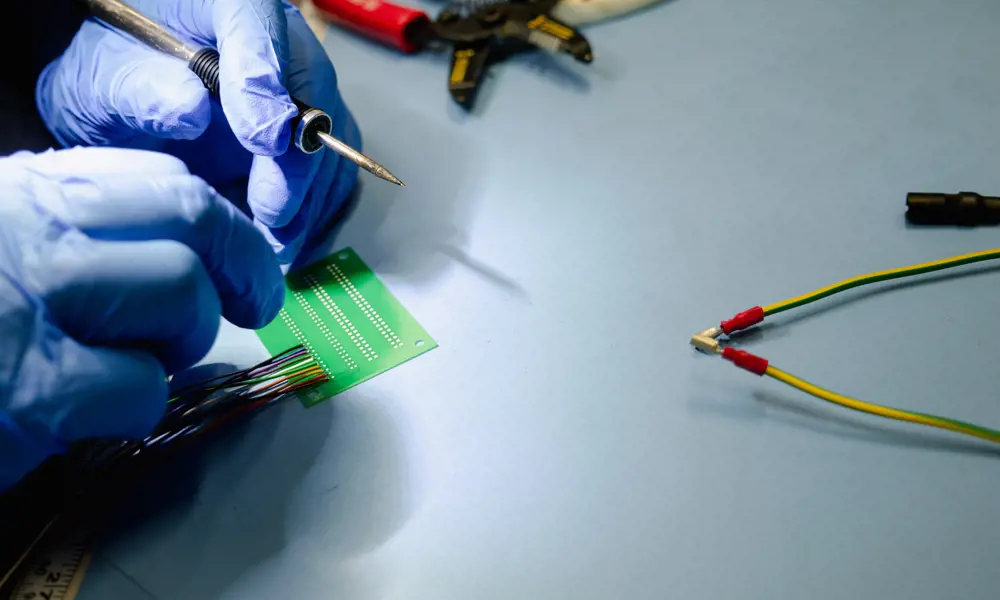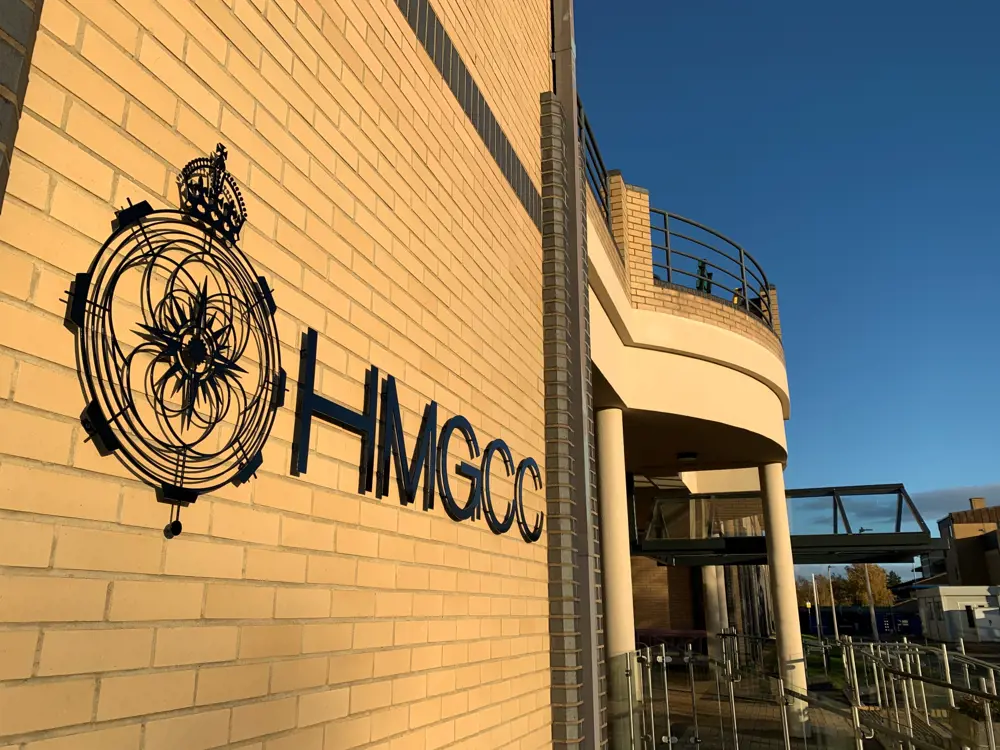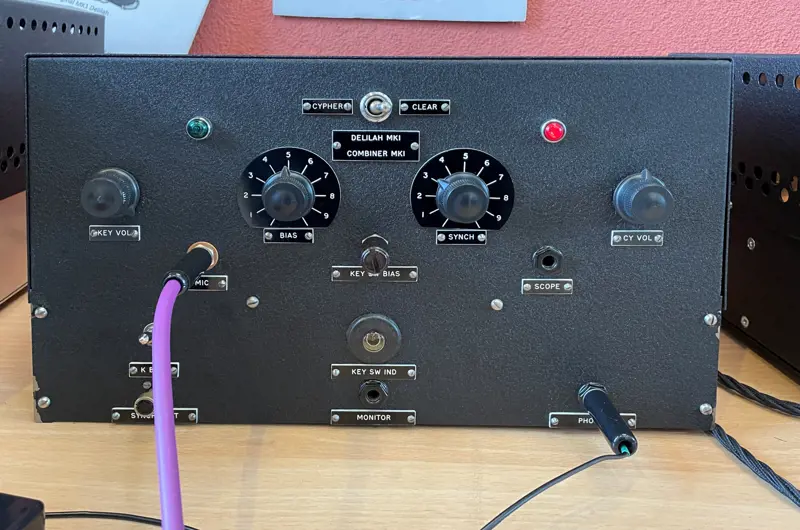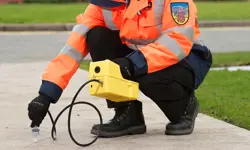
The secret world of national security tech
A brief history of HMGCC
📡 Founded in 1938, HMGCC started life as a specialist in overseas bespoke wireless communications.
HMGCC was set up as a new team to help maintain secure communications with overseas outposts in the event of war with Germany.
Previously the main method had been to send encrypted, morse code messages over the international public telegraph network but the risk was that these could be easily intercepted by a hostile country. A new method was developed, to put in place a private network, sending encrypted messages over a shortwave radio, linking directly to and from overseas premises.
A small communications team was put together to create this wireless network, an engineering support team, operating using the name ‘His Majesty’s Government Communications Centre’. The organisation grew rapidly during the Second World War. By 1945 it had about 7,000 staff with a wide variety of skills, carrying out many roles.
‘James Bond’ is often the name people utter when they first hear about the work of HMGCC – His Majesty’s Government Communications Centre. But there is no fictional super-spy at HMGCC. A pioneer in national security engineering, its work is very real, confidential in nature, vital to the country’s safety, and far flung from fiction.
More dramatic is the rapid progress in areas ranging from AI to intelligence gathering and cyber, which can pose both threats and opportunities to those working in national security.
For this reason, HMGCC has accelerated its drive to draw in fresh, new talent through its doors, as well as creating opportunities to work more openly with academia and industry.
Part of the draw of working for HMGCC is that you can do work that you cannot do anywhere else. When national security organisations need a tool or technology to support a piece of work – whether that is a gadget to help with intelligence collection, or a secure communications system to help government operatives stay safe in potentially dangerous locations – HMGCC will imagine, create and craft solutions to help this happen.

The HMGCC campus at Hanslope Park has a staff of engineers, scientists, technologists, CAD designers, and cyber experts, plus buildings full of high-tech specialist kit © HMGCC
At its Hanslope Park site, just outside Milton Keynes, it has an expansive campus complete with buildings full of high-tech kit for carrying out specialist functions. Its staff includes hundreds of engineers, scientists, technologists, CAD designers, and cyber experts (to mention just some of the roles) – all tested to the limit every day in their work for national security.
“The key for us in staying ahead of the swift pace of technological advancement is the talent we can attract into our organisation,” explains HMGCC’s CEO, George Williamson. “We do this in a number of ways: running apprenticeships, holding regular rounds of recruitment, and drawing on expertise from external sources such as universities and industry.
“We create amazing tools and technologies here at HMGCC. So many of the people who come to work for us are those who enjoy the creative aspect of engineering, solving unique problems and, at the same time, doing all of this work for the good of national safety.”
We create amazing tools and technologies here at HMGCC. So many of the people who come to work for us are those who enjoy the creative aspect of engineering, solving unique problems and, at the same time, doing all of this work for the good of national safety.
George Williamson, CEO of HMGCC
The apprenticeship route
One method used for continuing to attract a new generation of engineers and technologists is apprenticeships. HMGCC is now marking 10 years since the launch of its successful apprenticeship programme, with hundreds of new engineers and technologists having successfully passed through HMGCC’s on-the-job training.
Apprenticeships at HMGCC are currently run in software development, IT, electronics, production engineering, and electronics assembly, with applications invited from September. They are aimed at those aged 18 and over.
The organisation’s Head of Recruitment, Sam, explains: “In software, for example, we recruit people from apprentice level to graduates. One major benefit of our apprenticeships is our on-the-job support. People can join us thinking there is an expectation that they need to know it all, but our organisation is brilliant at transferring knowledge and making sure people can learn those key skills.”
She continues: “You can be yourself in this organisation, you don’t have to be something you are not. Diversity is important to us and people come to us from all walks of life.
Apprentices with HMGCC find they are making a difference while learning – they really have a chance to make a difference while taking on all of these new skills.
Sam, Head of Recruitment at HMGCC
“Apprentices with HMGCC find they are making a difference while learning – they really have a chance to make a difference while taking on all of these new skills.”
For many HMGCC apprentices, this opportunity can lead to a lasting career with the organisation. Currently more than 90% of apprentices stay on to continue their work as full members of staff – after having been interviewed and following a recruitment process.
Apprenticeships are fully funded by HMGCC and include the opportunity to gain several accredited, professional qualifications. Salaries start at £21,116, which goes up each year of the apprenticeship, subject to passing the year.
HMGCC also participates in the government’s student bursary and development scheme for undergraduates, known as CyberFirst. This gives participants the opportunity to receive an annual bursary, paid summer internships and the potential for three years of employment. The scheme covers a range of activities that give people the support, skills and experience in the world of cybersecurity.

© Philipp Katzenberger / Unsplash
Turing’s Delilah project
🔐 How Alan Turing, AKA 'the prof', built a groundbreaking speech encryption device during WWII
Just a few miles down the road from Bletchley Park, Hanslope Park in Buckinghamshire was also once the workplace of modern computing pioneer Alan Turing. Following his work on Enigma at Bletchley Park, Turing first moved to Hanslope Park where he lived in a cottage onsite.
With most staff living on-site, there was an active social life that he took part in, playing chess and card games in the mess and attending dances. He gave evening lectures on mathematics and circuit design on site. It is believed Turing was nicknamed ‘the prof.’
Turing’s workspace was in the main laboratory, which once stood on site at Hanslope Park. There he developed a speech encryption system called Delilah, working closely with Donald Bayley, a recent graduate in electronic engineering. Turing ran a competition to give the project a name. This was won by Robin Gandy who it is believed suggested that it should be called Delilah as she was the ‘biblical deceiver of men’.
By the end of the Second World War, Turing and Bayley had succeeded in making a working prototype. They demonstrated the system in operation to high level visitors, usually by playing a recording of a Winston Churchill speech through it. At this point it was still effectively a prototype and more work would have been needed to produce a system that could be used in the field.
It is likely that the original prototype lived on in storage with other wartime equipment at Hanslope Park. Much of this was eventually broken up or taken off site.

Computing pioneer Alan Turing built his speech encryption system, called ‘Delilah’, at Hanslope Park during the Second World War © HMGCC
Software engineering with a purpose
It was 10 years ago when Holly became one of the first apprentices to walk through the doors of HMGCC – a mysterious place she had previously known little about. Aged just 19 at the time, Holly had a flair for technology and she was keen to find out how she could discover more about the alternatives to university.
A decade later, she is a fully fledged employee and hasn’t looked back. She soon found out why Hanslope Park, home to HMGCC, was such an unknown entity – with the focus of its work on providing tools and technologies to support the organisations working in national security.
She also found out that the kind of projects she could now work on would not be the types of challenges she would face anywhere else. Now working as a software tester in security research, she says the exploratory nature of the role, which is all about discovery and testing for many different types of scenarios, was what appealed to her about the job.
“When I started my apprenticeship there, I had never heard of HMGCC. When I found out more about it, I thought it sounded fun and it was all very exciting,” she recalls. “By the second year of the apprenticeship, we were more hands on and we were able to work in different software areas.
“The area I work in now is what keeps me here today – it is just so interesting and I honestly think everyone I work with is a genius, so many of them are world leaders in their field. It is an interesting type of job and, due to the nature of the work, it’s not really something you can do anywhere else.”
Since that time, hundreds of people have completed HMGCC apprenticeships – many of whom have stayed on to pursue careers at the site.
Working for the national security mission, and the knowledge that your work is helping keep the country safe, is a major draw for many candidates to the apprenticeship programme.
“I really wanted to be in a role where there was a broader purpose than money – a sense that there was a greater purpose behind the work,” says Holly.
I really wanted to be in a role where there was a broader purpose than money – a sense that there was a greater purpose behind the work.
Holly, software tester and former apprentice at HMGCC
A UK-wide innovation network
🤝 How HMGCC is collaborating with industry and academic organisations to solve national security challenges
Recently, HMGCC also launched a drive to work more openly with wider industry organisations and academia. HMGCC Co-Creation is an initiative run in partnership with the Defence Science and Technology Laboratory (Dstl), which allows more work to be carried out with the companies and institutions at the forefront of technological innovation, to help the UK solve some of the most difficult problems facing those working in the service of national security.
The initiative does not share anything secret, but issues challenges through a set of collaborators, who tap into networks of industry and academia to analyse where work is being done already in areas of interest to national security. Through HMGCC Co-Creation, these outside organisations are then given funding and support to work with experts at HMGCC to help advance and develop these ideas and solutions.
George Williamson explains: “Going forward, we are really excited about the opportunities that these new ways of working will offer us, helping us to build on our technical capabilities at a time when the pace of technological advancement is extraordinary.”
“Having done an apprenticeship, there have also been lots of financial benefits for me, not least that I don’t have a student debt as everything has been paid for by work, I don’t have to worry about any of that. When I was in the sixth form, I saw that the university fees were going up and I came across some information about apprenticeships.”
She adds: “Starting here at such a young age, I never really thought about long-term goals at that time. I initially just thought about getting to the end of the apprenticeship. Now it has been 10 years and I just think it has gone by so fast.”
Working in software testing, Holly recognises the fact there are fewer women than men taking on roles in this area. She is keen to encourage other women into roles like hers and is pleased that HMGCC is one technical employer making strides to rebalance the workforce.
She says: “Working in my area, I know that sometimes I can be the only woman in the room – but we do have some amazing women working here at HMGCC who are great role models. I would like to see more women coming into engineering and technical roles, and I do know that at HMGCC there is a strong support network.”
***
👩💻 Keen on apprenticeships? Find out more about HMGCC’s exciting apprenticeship programmes.
🤝 Prospective industry or academic partner? Find out more about HMGCC and Co-Creation scheme
Keep up-to-date with Ingenia for free
SubscribeRelated content
Electricals & electronics

Accelerometers
Used in earthquake measurements, laptops, planes and even in stargazing apps, today’s accelerometers are much smaller than when they were first developed in 1927. Find out how they detect movement and vibration.

How to maximise loudspeaker quality
Ingenia asked Dr Jack Oclee-Brown, Head of Acoustics at KEF Audio, to outline the considerations that audio engineers need to make when developing high-quality speakers.

Cable fault locator
The winner of the Institute of Engineering and Technology’s 2014 Innovation Award was EA Technology’s CableSnifferTM, which uses a probe and chemical sensing technology to identify faults, saving energy companies millions of pounds each year.

High speed evolution
In December 2010, Eurostar International Ltd awarded a contract for 10 new high speed trains to Siemens. The company has used a system developed over decades to maximise the performance and passenger-carrying ability of its 320km/h trains.
Other content from Ingenia
Quick read

- Environment & sustainability
- Opinion
A young engineer’s perspective on the good, the bad and the ugly of COP27

- Environment & sustainability
- Issue 95
How do we pay for net zero technologies?
Quick read

- Transport
- Mechanical
- How I got here
Electrifying trains and STEMAZING outreach

- Civil & structural
- Environment & sustainability
- Issue 95